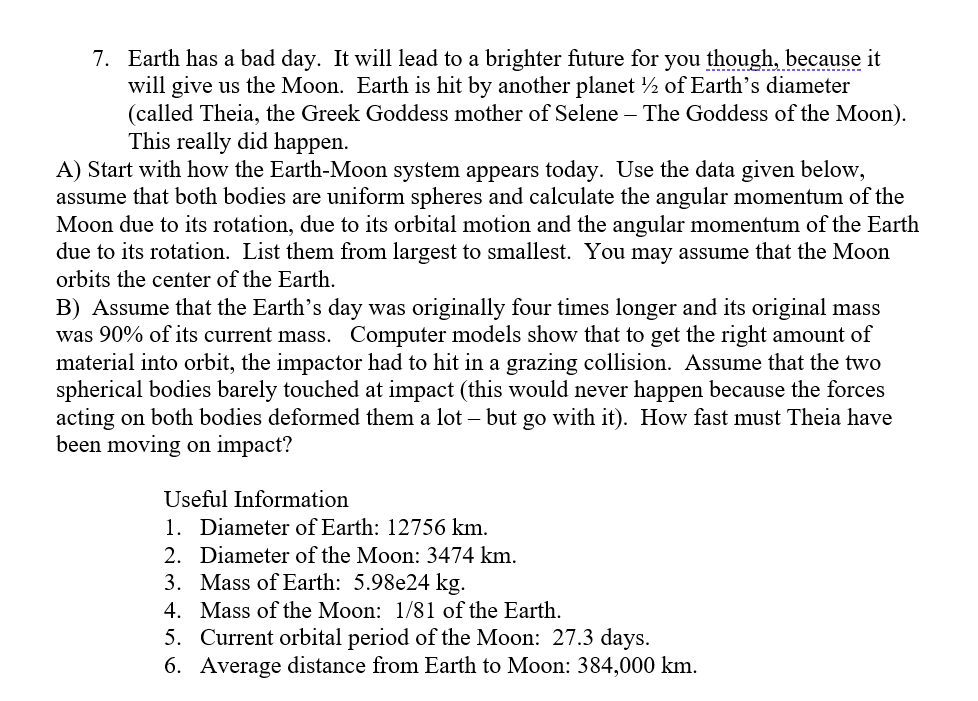7. Earth has a bad day. It will lead to a brighter future for you though, because it will give us the Moon. Earth is hit by another planet ½ of Earth's diameter (called Theia, the Greek Goddess mother of Selene – The Goddess of the Moon). This really did happen. A) Start with how the Earth-Moon system appears today. Use the data given below, assume that both bodies are uniform spheres and calculate the angular momentum of the Moon due to its rotation, due to its orbital motion and the angular momentum of the Earth due to its rotation. List them from largest to smallest. You may assume that the Moon orbits the center of the Earth.
Please answer part A and B. show all work please :D

Hello. Since your question has multiple parts, we will solve the first part for you. If you want the remaining part to be solved, then please resubmit the whole question and specify the part you want us to solve.
A)
Let DE and DM, and RE and RM denote the diameters and radii of the Earth and the Moon, respectively. Let d denote the distance of the Moon from the Earth.
Let ME and MM denote the masses of the Earth and the Moon, respectively.
Let TM and TE denote the Moon’s rotation period (also its orbital period) and the Earth’s rotation period, respectively.
Let I0M, IM, and IE denote the moments of inertia of the Moon about its rotational axis, that about its revolution axis, and that of the Earth about its rotational axis, respectively.
Evaluate the Moon’s rotational angular momentum (L0M) from its rotational angular speed (ω0M) and its rotational period (TM) as follows:
Assume that the Moon’s center is at the distance d from the Earth’s center.
First, determine IM by using the parallel axis theorem, and then determine the Moon’s orbital angular momentum (LM) from its orbital angular speed (ωM) and its orbital period (TM) as follows:
Step by step
Solved in 5 steps








